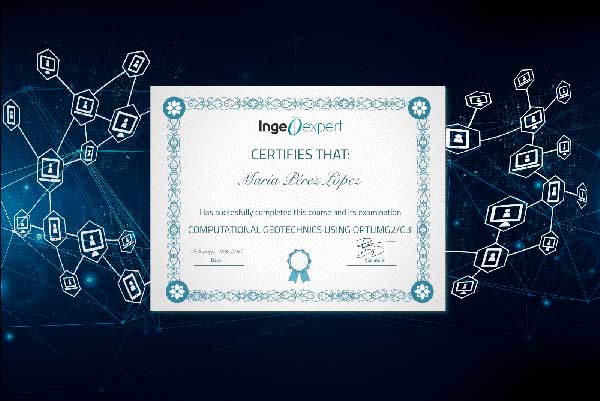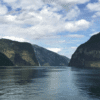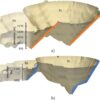Introduction
The purpose of the course is to introduce students to selected aspects of Applied Structural Geology. The main course topics will consist of an introduction to the following:
- Structural geology and structural systems
- Remote sensing and GIS methods from a structural geology perspective
- Cross-sections and restoration methods
- Structural Analogues and Virtual Outcrops methods
- Fractures, faults and fluid flow analysis
- Visualisation and modelling of Earth Structures
The course is aimed at engineers and geologists and others who have a basic background knowledge of Earth Structures who wish to improve their knowledge of how structural geology is applied across a range of industries including the energy, mining and geotechnical/engineering sector
Objectives
The course objective is to provide a practical-based introduction to Structural Geology and how it may be applied to constrain the Earth’s surface and sub-surface geological evolution. After completing the course, students will have an appreciation of how structural geology methods are used by industry across scales from regional (mountain belt or basin-scales) to outcrop-scale. They will gain knowledge of how structural systems typical of different tectonic environments form, how the latest datasets and methods can be used to analyse them and how these feed into different applied sectors based on their requirements.
Objectives will be to gain an appreciation of:
- Structural systems in a tectonic framework
- Regional scale analysis using remote, sensing and GIS (using QGIS platform)
- How restoration methods are used in analysis of mountain belts
- Basin to outcrop-scale structures and the structural analogue approach (using digital outcrop methods)
- Fracture analysis methods and their use in fractured reservoir characterization and modelling
- 3D/4D modelling of structures
Week 1. An introduction to Structural systems and review of underlying concepts
Week 2. Regional scale analysis – remote sensing and GIS
Week 3. Regional scale analysis – cross-section construction, restoration and validation
Week 4. Basin- to Outcrop-scale analysis – digital outcrop acquisition methods and use of structural analogues
Week 5. Basin- to Outcrop-scale fracture analysis methods and fluid flow implications
Week 6. Introduction to analogue/numerical modelling including machine learning.
Ken McCaffrey
Ken McCaffrey is a Professor in Earth Sciences at Durham University. His work seeks to unravel the geometrical complexity and temporal evolution of tectonic systems underpinned by geospatial modelling methods including GIS-based structural analysis and new digital fieldwork technologies including high spatial resolution laser scanning, UAV photogrammetry and 3D/4D visualisation methods.
Working on ancient to modern systems, he has completed many studies on the deformation of continental crust in mountain belts, transform and extensional margins. A particular emphasis has been on the role of basement inheritance in the North Altantic basins, West Greenland, and the Great South Basin in New Zealand.
Using fracture attribute analysis and fracture topology methods, his studies have shown how basement (metamorphic/igneous lithologies) and overlying sedimentary basins can form reservoirs and transport pathways for geofluids. He has developed digital 3D mapping methods of fault geomorphology which has been used to determine slip-rates on active fault systems and map the distribution of surface ruptures, afterslip and near fault deformation in the aftermath of earthquakes.
His work has shown how space is created for igneous intrusions (dykes, sills and plutons) in continental crust by studies of their geometry, emplacement and structural evolution He also works on the relationship between volcanoes and destructive plate boundaries.
He is a Director of University spin-out company Geospatial Research Ltd and completed a 4-year Royal Society Industry fellowship working part-time at BP Exploration on basement inheritance in geological systems in 2009.
The course is delivered online through our easy-to-use Virtual Campus platform. For this course, a variety of content is provided including:
– eLearning materials
– Videos
– Interactive multimedia content
– Live webinar classes
– Texts and technical articles
– Case studies
– Assignments and evaluation exercises
Students can download the materials and work through the course at their own pace.
We regularly update this course to ensure the latest news and state-of-the-art developments are covered, and your knowledge of the subject is current.
Live webinars form part of our course delivery. These allow students and tutors to go through the course materials, exchange ideas and knowledge, and solve problems together in a virtual classroom setting. Students can also make use of the platform’s forum, a meeting point to interact with tutors and other students.
The tutoring system is managed by email. Students can email the tutor with any questions about the course and the tutor will be happy to help.
The course is aimed at geoscientists and engineers who want to update their understanding of Earth Structures and their analysis.
It would be suitable for those wishing to work in a variety of geoscience, energy and engineering sectors.
This course would be beneficial to all civil engineering practitioners and especially to those involved in the design, approval and maintenance of foundation engineering projects and any other structural and construction systems, such as: civil, municipal, environmental and construction engineers, consulting engineers, plans review personnel in municipalities, public works professionals, plant engineers, who are involved with building and construction works, technicians and specialists, geologists and earth scientists, civil engineers who want to understand foundations or any other load carrying soil-structure systems. The course will be of value both for those who are new to foundation engineering as well as to those who have experience with foundations.
As we move towards a Net-Zero future, the need for geoscientists and engineers who understand the formation and distribution of Earth’s structures seems likely to increase. Technological advances mean that the amount of surface and sub-surface data that becomes available will also increase. People with theoretical and practical skills to interpret, model and understand the limitations of these datasets will be needed in mining, energy, environmental and civil engineering replacing traditional geoscientist roles in petroleum industries.
Introduction
The purpose of the course is to introduce students to selected aspects of Applied Structural Geology. The main course topics will consist of an introduction to the following:
- Structural geology and structural systems
- Remote sensing and GIS methods from a structural geology perspective
- Cross-sections and restoration methods
- Structural Analogues and Virtual Outcrops methods
- Fractures, faults and fluid flow analysis
- Visualisation and modelling of Earth Structures
The course is aimed at engineers and geologists and others who have a basic background knowledge of Earth Structures who wish to improve their knowledge of how structural geology is applied across a range of industries including the energy, mining and geotechnical/engineering sector
Objectives
The course objective is to provide a practical-based introduction to Structural Geology and how it may be applied to constrain the Earth’s surface and sub-surface geological evolution. After completing the course, students will have an appreciation of how structural geology methods are used by industry across scales from regional (mountain belt or basin-scales) to outcrop-scale. They will gain knowledge of how structural systems typical of different tectonic environments form, how the latest datasets and methods can be used to analyse them and how these feed into different applied sectors based on their requirements.
Objectives will be to gain an appreciation of:
- Structural systems in a tectonic framework
- Regional scale analysis using remote, sensing and GIS (using QGIS platform)
- How restoration methods are used in analysis of mountain belts
- Basin to outcrop-scale structures and the structural analogue approach (using digital outcrop methods)
- Fracture analysis methods and their use in fractured reservoir characterization and modelling
- 3D/4D modelling of structures
Week 1. An introduction to Structural systems and review of underlying concepts
Week 2. Regional scale analysis – remote sensing and GIS
Week 3. Regional scale analysis – cross-section construction, restoration and validation
Week 4. Basin- to Outcrop-scale analysis – digital outcrop acquisition methods and use of structural analogues
Week 5. Basin- to Outcrop-scale fracture analysis methods and fluid flow implications
Week 6. Introduction to analogue/numerical modelling including machine learning.
Ken McCaffrey
Ken McCaffrey is a Professor in Earth Sciences at Durham University. His work seeks to unravel the geometrical complexity and temporal evolution of tectonic systems underpinned by geospatial modelling methods including GIS-based structural analysis and new digital fieldwork technologies including high spatial resolution laser scanning, UAV photogrammetry and 3D/4D visualisation methods.
Working on ancient to modern systems, he has completed many studies on the deformation of continental crust in mountain belts, transform and extensional margins. A particular emphasis has been on the role of basement inheritance in the North Altantic basins, West Greenland, and the Great South Basin in New Zealand.
Using fracture attribute analysis and fracture topology methods, his studies have shown how basement (metamorphic/igneous lithologies) and overlying sedimentary basins can form reservoirs and transport pathways for geofluids. He has developed digital 3D mapping methods of fault geomorphology which has been used to determine slip-rates on active fault systems and map the distribution of surface ruptures, afterslip and near fault deformation in the aftermath of earthquakes.
His work has shown how space is created for igneous intrusions (dykes, sills and plutons) in continental crust by studies of their geometry, emplacement and structural evolution He also works on the relationship between volcanoes and destructive plate boundaries.
He is a Director of University spin-out company Geospatial Research Ltd and completed a 4-year Royal Society Industry fellowship working part-time at BP Exploration on basement inheritance in geological systems in 2009.
The course is delivered online through our easy-to-use Virtual Campus platform. For this course, a variety of content is provided including:
– eLearning materials
– Videos
– Interactive multimedia content
– Live webinar classes
– Texts and technical articles
– Case studies
– Assignments and evaluation exercises
Students can download the materials and work through the course at their own pace.
We regularly update this course to ensure the latest news and state-of-the-art developments are covered, and your knowledge of the subject is current.
Live webinars form part of our course delivery. These allow students and tutors to go through the course materials, exchange ideas and knowledge, and solve problems together in a virtual classroom setting. Students can also make use of the platform’s forum, a meeting point to interact with tutors and other students.
The tutoring system is managed by email. Students can email the tutor with any questions about the course and the tutor will be happy to help.
The course is aimed at geoscientists and engineers who want to update their understanding of Earth Structures and their analysis.
It would be suitable for those wishing to work in a variety of geoscience, energy and engineering sectors.
This course would be beneficial to all civil engineering practitioners and especially to those involved in the design, approval and maintenance of foundation engineering projects and any other structural and construction systems, such as: civil, municipal, environmental and construction engineers, consulting engineers, plans review personnel in municipalities, public works professionals, plant engineers, who are involved with building and construction works, technicians and specialists, geologists and earth scientists, civil engineers who want to understand foundations or any other load carrying soil-structure systems. The course will be of value both for those who are new to foundation engineering as well as to those who have experience with foundations.
As we move towards a Net-Zero future, the need for geoscientists and engineers who understand the formation and distribution of Earth’s structures seems likely to increase. Technological advances mean that the amount of surface and sub-surface data that becomes available will also increase. People with theoretical and practical skills to interpret, model and understand the limitations of these datasets will be needed in mining, energy, environmental and civil engineering replacing traditional geoscientist roles in petroleum industries.
More info
Finish this course and get a certificate based on Blockchain
Applied Structural Geology

Blockchain technology makes the certificate incorruptible, enabling companies to verifiy its autenticity.





Reviews
There are no reviews yet.